https://www.youtube.com/watch?v=c19kn3drdFU
I'm always interested in revolutionary advances in internal combustion, but as always, this design does not demonstrate conclusively how it does its thermal management, which is the key issue when shrinking the size and weight of an IC engine. It does appear to work, however; so they must have approached the cooling issue.
Duke Axial Engine
-
GIThruster
- Posts: 4686
- Joined: Tue May 25, 2010 8:17 pm
Duke Axial Engine
"Courage is not just a virtue, but the form of every virtue at the testing point." C. S. Lewis
Re: Duke Axial Engine
I wonder how different it sounds from an I5 or V5, or H5.
You can do anything you want with laws except make Americans obey them. | What I want to do is to look up S. . . . I call him the Schadenfreudean Man.
-
GIThruster
- Posts: 4686
- Joined: Tue May 25, 2010 8:17 pm
Re: Duke Axial Engine
Probably much the same. Engine sound is mostly a function of exhaust handling and you can make most IC engines sound as robust or innocuous as you like. Radial engines for example, often sound gnarley, but that's because they often have almost no exhaust baffling.
Radials are a great idea until you need to apply water cooling. Then they're suddenly very heavy. Air cooling is not an efficient method so what you do with the water jackets really matters a great deal.
Radials are a great idea until you need to apply water cooling. Then they're suddenly very heavy. Air cooling is not an efficient method so what you do with the water jackets really matters a great deal.
"Courage is not just a virtue, but the form of every virtue at the testing point." C. S. Lewis
-
kunkmiester
- Posts: 892
- Joined: Thu Mar 12, 2009 3:51 pm
- Contact:
Re: Duke Axial Engine
Looks like a combustion powered axial hydraulic motor. There are probably ways to work water jackets onto that.
Evil is evil, no matter how small
Re: Duke Axial Engine
The sliding ports for intake, ignition, and exhaust look difficult to engineer for long low friction life. How to cool the rotating engine block isn't obvious.
The daylight is uncomfortably bright for eyes so long in the dark.
-
kunkmiester
- Posts: 892
- Joined: Thu Mar 12, 2009 3:51 pm
- Contact:
Re: Duke Axial Engine
The ports don't have valves, the cylinders move past them, just like a pump/motor:
http://en.wikipedia.org/wiki/Axial_piston_pump
You have similar challenges, but we've been making pumps like these for decades. The high pressures and temperatures are new though. Far more interesting, google reminded me that a lot of axial pumps and motors have variable displacement. This can let an operator of a bulldozer or such do interesting things since the transmission is a variable displacement motor and pump connected. It'd be interesting to see a variable displacement engine, though I'm not sure what the advantage would be.
http://en.wikipedia.org/wiki/Axial_piston_pump
You have similar challenges, but we've been making pumps like these for decades. The high pressures and temperatures are new though. Far more interesting, google reminded me that a lot of axial pumps and motors have variable displacement. This can let an operator of a bulldozer or such do interesting things since the transmission is a variable displacement motor and pump connected. It'd be interesting to see a variable displacement engine, though I'm not sure what the advantage would be.
Evil is evil, no matter how small
-
GIThruster
- Posts: 4686
- Joined: Tue May 25, 2010 8:17 pm
Re: Duke Axial Engine
The advantage to variable displacement would be the same as in the past when manufacturers tried to shut down parts of engines at idle or low demand--better gas milage. The trouble plagued Cadillac V-8-6-4 built during the early 80's shut down pairs of cylinders at a time to conserve fuel under low load, but the complexity of the system and probably the premature computing bugged it from the start. What you really want to do is not have those pistons and shafts moving when you shut down, and if the axial motor works as a variable displacement motor, then it is not moving the pistons the entire length so they are essentially shut down for that part of the displacement. So there is an opportunity for both breakthrough power density and breakthrough economy in this design. Will be good to see what they get.
"Courage is not just a virtue, but the form of every virtue at the testing point." C. S. Lewis
Re: Duke Axial Engine
Duke was probably inspired by this engine from a century ago:
http://www.douglas-self.com/MUSEUM/POWE ... C.htm#treb
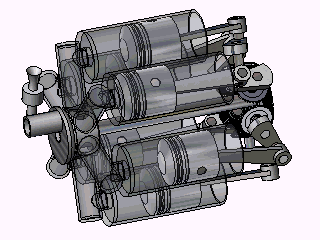
I reinvented this one (on paper), only to discover that it dated from the Civil War era:
http://www.douglas-self.com/MUSEUM/POWE ... g6.htm#ber
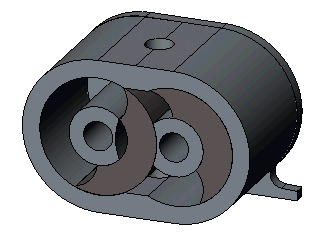
Some other inspiring designs from past centuries:
http://www.douglas-self.com/MUSEUM/POWE ... /tower.htm
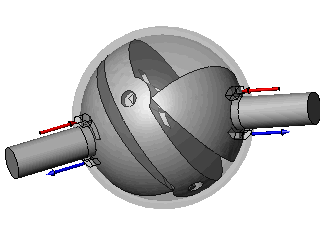
http://www.douglas-self.com/MUSEUM/POWE ... eng6.htm#f
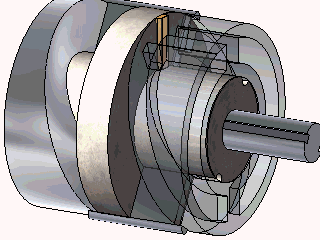
http://www.douglas-self.com/MUSEUM/POWE ... .htm#chris
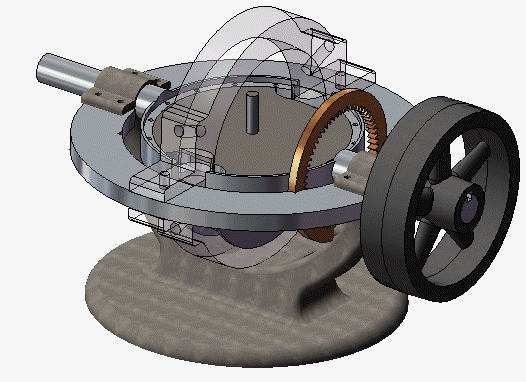
The hard part is sealing against high pressures. "Area" seals are much preferred to "line" seals.
http://www.douglas-self.com/MUSEUM/POWE ... C.htm#treb

I reinvented this one (on paper), only to discover that it dated from the Civil War era:
http://www.douglas-self.com/MUSEUM/POWE ... g6.htm#ber

Some other inspiring designs from past centuries:
http://www.douglas-self.com/MUSEUM/POWE ... /tower.htm

http://www.douglas-self.com/MUSEUM/POWE ... eng6.htm#f

http://www.douglas-self.com/MUSEUM/POWE ... .htm#chris

The hard part is sealing against high pressures. "Area" seals are much preferred to "line" seals.
-
GIThruster
- Posts: 4686
- Joined: Tue May 25, 2010 8:17 pm
Re: Duke Axial Engine
Hence the trouble with rotary Apex seals and the reason we we multiple rings to seal common pistons.DeltaV wrote: "Area" seals are much preferred to "line" seals.
"Courage is not just a virtue, but the form of every virtue at the testing point." C. S. Lewis